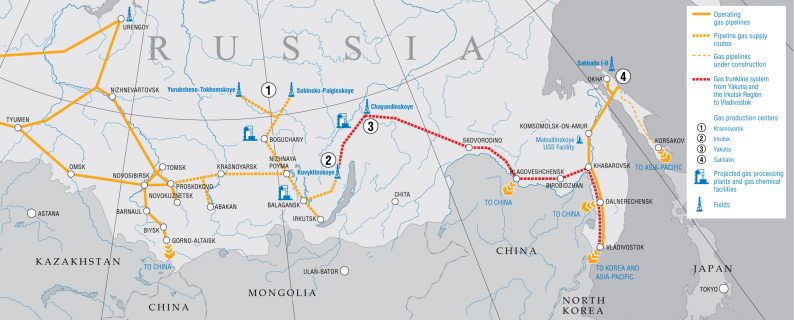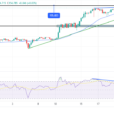1. Russia’s economy is currently in disarray as a result of falling commodity prices, slow economic growth in Europe, and its rivalry with the United States. Russia has been an ally of North Korea because it sees North Korea as a counterweight to the Chinese, Japanese, and US-backed South Koreans, the other powers in Northeast Asia. If Russia’s economy does not bounce back, North Korea will need to adapt to the weakening of one of its only friends in the world.
2. Russia has been looking to export commodities to South Korea, as Russia worries that the Ukraine conflict, the American fracking boom, the end of Western sanctions on Iran, and the possibility of Japan turning its nuclear power plants back on will lead Europe and Japan to reduce their imports of Russian oil and gas. Though Russia is obviously not thrilled about South Korea’s close relationship with the United States, it might nevertheless be happy to see a more united Korea serve as a counterweight to China and Japan in the Pacific.
In addition, the most direct way for Russia and South Korea to trade with one another is via the 800 km of North Korean territory that separates Seoul from Vladivostok. This is particularly true of gas exports, which travel cheapest through overland pipelines rather than by undersea pipelines or LNG ships. It is also true of many other types of goods, however. Politics aside, it would often make more sense to cross North Korea rather than to load and unload ships in order to sail the 600 km of sea between Russia and eastern South Korean ports (which are themselves 150 km or so from Seoul).

3. The youngest generation of the North Korean leadership, embodied by 33-year old Kim Jong Un, was raised during the 1990s, after the Soviet Union had fallen, China’s economic miracle had begun, and the Internet and satellite television had become common. Kim Jong Un himself went to school in Switzerland, a stark contrast to his father Kim Jong Il who may have been educated in China during the Maoist era.
Today Kim must be looking at Bashar al-Assad with fear. Like Kim, Assad took over at a fairly young age from a father who had been a larger than life figure. Assad lasted for one decade before the Syrian Civil War got underway; Lil’ Kim is now in the middle of his fifth year in office. Meanwhile, the number of North Koreans living today who were alive during the reign of the first Kim, Il Sung, is quickly falling.
4. Unlike most other poor countries, North Korea’s population is not young. Its population pyramid has two main bulges: one between 40-50 years old, the other between 15-25 years old. A decade from now, then, much of the older bulge will have become too old for manual labor, while the number of young people entering the workforce for the first time will have begun to drop off. At this point, North Korea may be more inclined to move away from a labor-based economy, which in turn will require it to import capital from abroad, perhaps from the South Koreans.












Leave A Comment